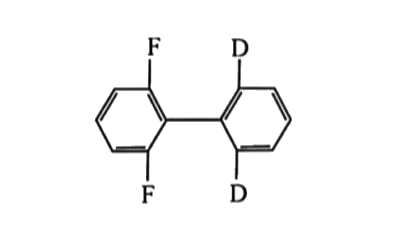Which of the following is optically active
Ethylene glycol
Oxalic acid
Glycerol
Tartaric acid
The correct Answer is:D
To determine which of the given compounds is optically active, we need to identify if any of them possess a chiral center. A chiral center is typically a carbon atom that is bonded to four different substituents. Here’s how we can analyze each compound step by step:
1. Understanding Optical Activity:
- Optical activity refers to the ability of a compound to rotate plane-polarized light. This property is generally associated with chiral molecules, which lack an internal plane of symmetry.
2. Identifying Chiral Centers:
- A chiral center is a carbon atom that is bonded to four different groups. If a molecule has at least one chiral center, it is considered optically active.
3. Analyzing Ethylene Glycol:
- Ethylene glycol has the structure:
HO-CH2-CH2-OH
- In this molecule, both carbons are attached to two hydrogen atoms and one hydroxyl group. Since there are no carbon atoms with four different substituents, ethylene glycol is not optically active.
4. Analyzing Oxalic Acid:
- Oxalic acid has the structure:
HOOC-COOH
- Both carbon atoms are bonded to two identical carboxylic acid groups. Therefore, there are no chiral centers in oxalic acid, making it not optically active.
5. Analyzing Glycerol:
- Glycerol has the structure:
HO-CH2-CHOH-CH2-OH
- The first and last carbon atoms are each bonded to two hydrogen atoms, and the middle carbon is bonded to one hydroxyl group and one hydrogen atom, but it also has two identical groups. Thus, glycerol does not have any chiral centers and is not optically active.
6. Analyzing Tartaric Acid:
- Tartaric acid has the structure:
HOOC-CHOH-CHOH-COOH
- In tartaric acid, the two middle carbons are bonded to different groups (hydroxyl and hydrogen) and thus can be considered chiral centers. Therefore, tartaric acid has chiral centers and is optically active.
Conclusion:
Based on the analysis, the compound that is optically active is tartaric acid.
- Optical activity refers to the ability of a compound to rotate plane-polarized light. This property is generally associated with chiral molecules, which lack an internal plane of symmetry.
- A chiral center is a carbon atom that is bonded to four different groups. If a molecule has at least one chiral center, it is considered optically active.
- Ethylene glycol has the structure:
HO-CH2-CH2-OH
- In this molecule, both carbons are attached to two hydrogen atoms and one hydroxyl group. Since there are no carbon atoms with four different substituents, ethylene glycol is not optically active.
- Oxalic acid has the structure:
HOOC-COOH
- Both carbon atoms are bonded to two identical carboxylic acid groups. Therefore, there are no chiral centers in oxalic acid, making it not optically active.
- Glycerol has the structure:
HO-CH2-CHOH-CH2-OH
- The first and last carbon atoms are each bonded to two hydrogen atoms, and the middle carbon is bonded to one hydroxyl group and one hydrogen atom, but it also has two identical groups. Thus, glycerol does not have any chiral centers and is not optically active.
- Tartaric acid has the structure:
HOOC-CHOH-CHOH-COOH
- In tartaric acid, the two middle carbons are bonded to different groups (hydroxyl and hydrogen) and thus can be considered chiral centers. Therefore, tartaric acid has chiral centers and is optically active.
Based on the analysis, the compound that is optically active is tartaric acid.
Topper's Solved these Questions
- ALDEHYDES, KETONES & CARBOXYLIC ACIDSBook:NARAYNAChapter:ALDEHYDES, KETONES & CARBOXYLIC ACIDSExercise:EXERCISE -I (C.W.)
Explore 15 Videos
- ALDEHYDES, KETONES & CARBOXYLIC ACIDSBook:NARAYNAChapter:ALDEHYDES, KETONES & CARBOXYLIC ACIDSExercise:EXERCISE -I (H.W.)
Explore 15 Videos
- ALDEHYDES, KETONES & CARBOXYLIC ACIDSBook:NARAYNAChapter:ALDEHYDES, KETONES & CARBOXYLIC ACIDSExercise:EVALUATE YOURSELF -5
Explore 8 Videos
- ALCOHOLS, ETHERS, PHENOLBook:NARAYNAChapter:ALCOHOLS, ETHERS, PHENOLExercise:Assertion Reaosn
Explore 10 Videos
- AMINES & DIAZO COMPOUNDSBook:NARAYNAChapter:AMINES & DIAZO COMPOUNDSExercise:Subjective type Q.
Explore 13 Videos
Similar Questions
Knowledge Check
Which of the following be optically active ?
A B
B C
C D
D
Which of the following is optical active subtance ?
A B
B C
C DBoth (A) and ( B)
DBoth (A) and ( B)Which of the following are optically active?
A B
B CCH3−CD∣D−COOHD
CCH3−CD∣D−COOHD

